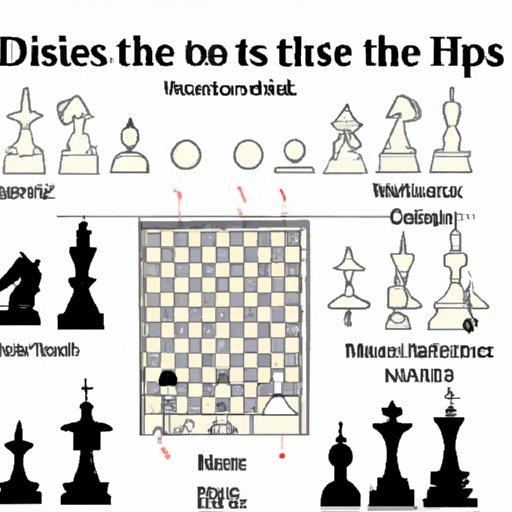
I. Introduction
Setting up a chess board can be a daunting task, especially for new players. It’s easy to get lost in the sea of black and white squares and feel overwhelmed. However, with the right guidance, setting up a chess board can be simple and enjoyable. This article aims to provide a step-by-step guide with visual aids, tips, and tricks to help readers set up their chess board with ease.
II. Step-by-Step Guide
The first step in setting up a chess board is to lay out the board correctly. Be sure that the bottom right-hand corner square is white. Then, place the rooks on the corners of the board, followed by the knights next to them, then the bishops, and finally the queen on her corresponding color and the king on the remaining square.
It’s important to note that each player should have a white square on their bottom-right corner. The arrangement of the pieces should be symmetrical and mirror each other on opposing sides of the board.
To ensure that all pieces are placed correctly, remember that the queen should always be on her own color, which goes for both players. Also, notice that the king always goes on the opposite color as the queen.
When positioning the knights, pay attention to the fact they must be next to the rooks. The rooks should always go on the corner squares. The bishops will then be placed next to them; accordingly, the white bishop goes on the white square, and the black bishop goes on the black square.
III. Visual Aids
Using visual aids when setting up a chess board can be incredibly helpful, particularly for those who learn best through visual instruction. Consider video tutorials on YouTube or informative diagrams created just for this purpose. Even official chess boards come with manuals that have visual aids of the board setup in them.
Creating an annotated diagram or illustration is similar to the classic chessboard image, but with labels of each piece in their corresponding positions. It may be useful to have a reference guide while learning, so one of these charts create to visualize the placement of the pieces as you place them on the board can help a lot.
IV. Quick Reference Guide
For those looking for a quick reference guide when setting up a chess board, follow these simplified steps:
- Lay out the board with the bottom-right corner square being white.
- Place the rooks on the corners.
- Follow up with the knights next to the rooks.
- Then, place the bishops next to the knights.
- Place the queen on the square that corresponds with her color, ensuring that each queen is on her color.
- The king is then placed on the remaining square of the opposite color as the queen.
V. Troubleshooting Common Mistakes
Even with the best guides, mistakes can still happen when setting up a chess board. Here are a few common mistakes to watch out for:
- Pieces are in the wrong place – the biggest one being the king and queen placed in wrong squares. Check that the queen is set on her corresponding color.
- If the knights are in the wrong position may cause confusion, and should be moved if you notice they aren’t beside the rooks. Next to the knight there must always be a bishop, and they should not be switched around.
- Make sure that the rooks go in the corners of the board.
VI. Themed Chess Sets
Themed chess boards are a great way to add personality to the game. For example, Harry Potter or Lord of the Rings-themed chess sets are popular. When setting up these specific chess sets, be sure to pay attention to the instructions that come with the set. Certain sets may have unique layouts or designs that require special attention, so be sure to reference the manual before proceeding.
VII. Conclusion
Setting up a chess board may seem overwhelming at first, but with practice, every player can become a pro in no time. Review the step-by-step guide and visual aids until you master the right movement and placement of each piece. Make sure to avoid common mistakes and reference manuals when dealing with themed chess boards. Finally, remember the key to success is practice.





